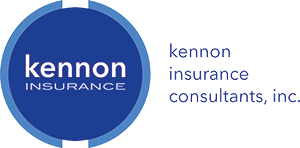Health Care Reform FAQs for Individuals & Families
How do I access Exchanges?
Individuals are encouraged to look at their options and apply online. There is a paper application as well. We will have a link to this application on our website and a paper version that you can print as soon as they become available. You will need information including your SSN#, your most recent pay stub and/or W-2 statement and information related to any employer-based coverage you currently have or have been offered. Open enrollment for plans starting January 1, 2014 runs from October 1, 2013-March 31, 2014.
Kennon Insurance will walk you through the application and explain your options at no cost to you. There will be navigators and community resources to also help explain the Exchange and application process, but we are happy to help you with one simple phone call and have almost 40 years of experience in the industry!
Are there options other than the exchanges?
Yes. Many people will continue to get coverage through their employer. Insurance carriers will also have their own “off exchange” products, similar to the way it works today. However, after January 1, 2014, all plans on the private exchanges or by insurance companies directly will still not be able to discriminate based on pre-existing conditions and must cover the Essential Health Benefits. We do not yet know how these “off-exchange” plans will be priced, but you will not be able to qualify for tax subsidies unless you get a plan through the government exchange/marketplace.
What kinds of government assistance is available for helping to pay for coverage?
Tax credits will be available for people between 100% and 400% of the poverty line to help pay for the mandatory health insurance. Based on the 2014 estimated Federal Poverty Limit, this means that a single person household would get some assistance if it’s income is less than $47,300 and a family of four would get assistance if household income is less than $97,000. You can calculate an estimate of your tax subsidy at http://kff.org/interactive/subsidy-calculator/
What are the penalties for not getting coverage?
The penalty in 2014 is only $95 per individual ($47.50 per child) or 1.0% of household income, whichever is greater. In 2015, this goes up to $325 per adult ($162.50 per child) or 2.0% of family income. For 2016 and beyond, the penalty is $695 per adult ($347.50 per child) or 2.5% of family income.
What types of plans will be offered?
There will be four “color-based” plan classifications in the Exchange – bronze, silver, gold, and platinum. Bronze plans will cover at least 60% of the estimated cost of medical care; silver plans cover 70%; gold plans cover 80%; and platinum plans pay 90%. The lower-ranked plans will have higher deductibles and cost sharing than the higher-ranked plans but the gold and platinum plans will also have higher premiums than the bronze and silver plans.
For 2014, individual and small group plans must cap their maximum out-of-pocket costs in any plan at $6,350 for an individual and $12,700 for a family – any cost-sharing cannot exceed those limits in the plan year. For small groups, the deductible is capped at $2,000 per individual and $4,000 per family. These levels will be adjusted on an annual basis.
What does community rating mean?
Right now, health insurance premiums are determined using a risk rating. This means that the likelihood of a person incurring health costs based on their health history and personal medical data is used to determine premiums charged. With a community rating, insurance companies cannot used applicant-specific health information to determine the cost to cover that person. Instead they can only issue rates based on factors that affect the market population as a whole. In the case of health care reform, this community rating system allows insurance premiums to be based only on age, geographic location and smoking status.
